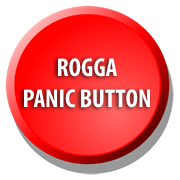Description
Limited cassette box featuring Therion’s five first albums on cassette. Black cassettes with white text. Limited 500 copies
Cassette 1: Of Darkness 1991
If your attraction to Therion’s music stems solely from their later work, which incorporates increasing use of choir and orchestra to create conceptual, gothic metal symphonies, then their earliest albums might be a little outside your comfort zone. But there was a time in which Therion produced some bleak and evil death metal, with only the barest hint at the band’s future direction. This hint comes in the form of synthesizers, which are used on the opening track “The Return” to create another level of atmosphere behind the dense and central guitars. The guitars are so thick on this album, broiling beneath Christopher Johnsson’s reverbrous grunts, that you feel like you are drowning in molasses. “Asphyxiate With Fear” is a faster flurry of vomitous death metal, more in line with early, thrashing Pestilence. In “Morbid Reality”, the Hellhammer/ Celtic Frost influence shines through the churning guitar rhythms, though it’s faster to the point of grindcore. “Megalomaniac” has a good melody to follow, and “A Suburb to Hell” is one of my easy favorites, from energetic thrash to grinding disgust, and some haunting melodies thrown in there. “Genocidal Raids” is Hellhammer-inspired thrash that opens with a doomed atmosphere, and “Time Shall Tell” revisists this pervasive hybrid, with some sick leads. “Dark Eternity” ends the album with some beefy grooves. Though charming enough for classic purists of the genre, Of Darkness is far from Therion’s best work. The lyrics are average at best, and downright silly in some places. They range from the occult to the more relevant, social topics you’d find in thrash metal. McDonalds feed their cows with our children’s lives. I knew there was a reason I liked to eat there. You can hear the roots of Lepaca Kliffoth here, and the album holds its own against many forgotten peers of the age, but Johnsson and band would have grown bored writing more than a few albums like this, so the orchestral evolution of the band was a wise choice. It’s pretty interesting to go back to this or Beyond Sanctorum, then explore the band’s incrimental metamorphis through Symphony Masses and Lepaca Kliffoth to their later, diverse concept albums with all the guest musicians.
Cassette 2: Beyond Sanctorum 1992
Quite original death metal, from a period where Therion still played surprisingly original death metal. Complex structures built from simpler smaller parts, some of these parts being basic and some quite surprising, make for a varied listen. The addition of very sparsely used keyboards and even the appearance of some clean vocals (on Symphony of the Dead) by two guest singers prove it can be done in death metal, and set Therion out from the rest as groundbreakers. The clean vocals and keyboards would also be a sign of things to come on the following albums; here they appear too little to annoy any clean-elements hater (although the occasional production-effects might). The general variedness coming from the non-typical elements and the occult atmosphere allow this record to be enjoyed by most fans of dark metal, although it’s quite a jump from this album to Therion’s later work. This is recommended death metal, and quite some progress from their debut, both in terms of originality and execution. The Nuclear Blast re-release lacks the original artwork and lyrics, but adds 5 bonus tracks (Tyrants of the Dead is listed as bonus). The tracks are just slightly less polished versions of the albumtracks, except for Symphony of the Dead which has a different vibe being slightly rawer.
Cassette 3: Symphony Masses: Ho Drakon Ho Megas 1993
Somewhere between their Death Metal roots and their Symphony Heavy Metal to follow, Therion created this gem of an album that manages to incorporate both influences into a unique brand of metal. This band’s first two albums are excellent examples of Swedish death metal with an enlightened sense of in bedded melody within crafty songwriting. Therion manage to retain this quirky melodicity and original songwriting and blend it with older styles of Heavy Metal thundering riffs and at times basic rock beats. What makes this album special is in its ability to seamlessly transition from the death metal and heavy metal throughout the album. Never does Therion sound forced in marrying the two approaches, and the result is a melting of both styles into one unique offset of the metal genre. Adding to this originality is expert musicianship with technical abilities that only a few at the time possessed.
Cassette 4: Lepaca Kliffoth 1995
When Christofer came back from Switzerland, after recording a Messiah album, Nuclear Blast wanted to sign them. They agreed, recorded their first single, The Beauty in Black, which sold 12.000 copies in Europe without any special promotion. Then came this album and sales picked up a bit, when compared to their earlier efforts. Now they had pretty much left their death metal sound behind, picked up the heavy metal, which you could hear in Symphony Masses if only you listened careful enough, turning symphonic and drastically changing the vocals. They were originally growls, turning into grunts for the previous album now they were some kind of hardcore screams. It sounds rather strange, if truth be told, and is not as great as Dan Swanos vocals on Theli. The bass playing on Ho Drakon Ho Megas was really striking, here theres a new bass player. His name is Fredrik Isaksson and even though theres still an occasional solo, his way of handling the instrument is not half as busy as Andreas Wahls was. On the tour with Annihilator following this album Fredriks personal problems (including abuse) and Piotrs problems with Fredrik made him leave the band to be replaced by Lars Rosenberg (Entombed). But thats a later story. Lepaca Kliffoth is in a way even more experimental than Ho Drakon Ho Megas, because none of the new elements had really been tried in metal before, especially not mixed. So what are the new elements? Well besides Christofers hardcore screams, he also manages to produce some bass-baritone vocals and this is perhaps the start of the operatic vocals theyve been using more and more. There are more keyboards than ever before, more melodies and some Persian influences. Today oriental and Egyptian-sounding riffs are commonplace, but they werent in 1995. The production is better than ever before, and so is the guitar playing, perhaps as a result of lessening the downtuning. The riffs are really cool, and when combined with the keyboards you almost think of Theli. The keyboards are improved, and used a lot more. They provide melody, atmosphere and some of the brilliant, pulsating intensity that they showed off on the next album. Sorrows of the Moon is a cover of a Celtic Frost song, providing some epicness to this album which otherwise showcases a certain speed in the drumming and generally more heaviness and headbanging than Symphony Masses. The title track sounds pretty much like Vovin with edge, the symphony is there but its combined with much more intensity, and its tuned lower. Evocation of Vovin is a song that has everything, intense intro, progressions, a kick-off with distortion and vocals, transcending into a middle-part with perfect keyboards, continuing into one of these plodding yet headbanging parts where you just wait for the beat to pick up again. And it does, oh, it does. So, Therion got the pieces together and managed to develop their sound even further without sounding as odd as on Ho Drakon Ho Megas. People bought it, because this is some excellent metal, pioneering the symphonic metal and showcasing some excellent guitar work. For any person who likes Therion really.
Cassette 5: Theli 1996
In many ways, 1996s Theli could be considered Therion’s defining moment–that is, the Therion we know today. With this album, Christoffer Johnsson left behind nearly all trace of his death metal roots. However, it should be noted that while it’s a very solid symphonic metal album, easily one of the best releases of the sub-genre, it’s very much just a heavy metal album under the guise of something more. Many of the song structures and ideas one hears on this disc are time-honoured metal concepts, Christoffer Johnsson just has a knack for incorporating operatic vocals and symphonic elements into said concepts. That being said, we have a great piece of work on our hands. Each song evokes intense gothic atmosphere and ethereal dreamscapes, dealing with such themes as Thelema and other forms of occultism. Some tracks barrel forth with bombast and grandiosity, such as To Mega Therion, while others masterfully slither into our ears, as Cults of the Shadow and In the Desert of Set. Invocation of Naamah sears with aural black-magick, thrashing the hell out of that main riff, which underlies a relentless volley of shouting, choir, and clean vocals. Very nice. It’s followed by The Siren of the Woods, a sad, dreamlike composition whose structure rises and falls with chilling grace. Another great aspect of this album is the overall structure. All three of the instrumental segues are well-executed, and feel right in place. No filler here. In fact, they’re necessary. Preludium is a brilliant opener to the album, an eerie foreshadowing of the opus to come. Interludium moves the listener to the second half of the album, which has (with such songs as Nightside of Eden and Opus Eclipse) somewhat of a different feel to it. However, before things start to drag, we are assaulted with the wonderful, previously described Invocation of Naamah. …And exhale. Once we’ve been successfully slaughtered by its awesomeness, we are gently lilted to the most emotionally evocative song on the album, the aforementioned Siren of the Woods. And then… one last burst of energy! The up-tempo Grande Finale/Postludium leads us out of the album, and fades off into the distance as we’re left contemplating what we just listened to. This is good stuff indeed… but you need to have tolerance for symphonic metal to appreciate it. Definitely recommended; it’s a great place to start with Therion.
Track listing:
Of Darkness 1991
1. The Return
2. Asphyxiate With Fear
3. Morbid Reality
4. Meglamaniac
5. A Suburb To Hell
6. Genocidal Raids
7. Time Shall Tell
8. Dark Eternity
Beyond Sanctorum 1992
1. Future Consciousness
2. Pandemonic Outbreak
3. Cthulu
4. Symphony Of The Dead
5. Beyond Sanctoum
6. Enter The Depths Of Eternal Darkness
7. Illusions Of Life
8. The Way
9. Paths
10. Tyrants Of The Damned
Symphony Masses: Ho Drakon Ho Megas 1993
1. Baal Reginon
2. Dark Princess Naamah
3. A Black Rose
4. Symphoni Drakonis Inferni
5. Dawn Of Perishness
6. The Eye Of Eclipse
7. The Ritualdance Of The Yezidis
8. Powerdance
9. Procreation Of Eternity
10. Ho Drakon Ho Megas, Act 1: The Dragon Throne
11. Ho Drakon Ho Megas, Act 2: Fire And Ecstasy
Lepaca Kliffoth 1995
1. The Wings Of The Hydra
2. Melez
3. Arrival Of The Darkest Queen
4. The Beauty In Black
5. Riders Of Theli
6. Black
7. Darkness Eve
8. Sorrows Of The Moon
9. Let The New Day Begin
10. Lepaca Kliffoth
11. Evocation Of Vovin
Theli 1996
1. Preludium
2. To Mega Therion
3. Cults Of The Shadow
4. In The Desert Of Set
5. Interludium
6. Nightside Of Eden
7. Opus Eclipse
8. Invocation Of Naamah
9. The Siren Of The Woods
10. Grand Finale – Postludium
11. In Remembrance
12. Black Fairy
13. Fly To The Rainbow





